To make this process a more enjoyable experience, I’ve put together five fun accent wall tips to get you started. So grab a coffee and join me as together we turn your house into a trendy home.
And, to save you valuable research time, I’ve included an easy-to-follow tutorial on how to paint an accent wall.

Tip #1 — Go With the Unexpected
Ceilings work particularly well, especially when flanked by white crown molding — as it further separates the color block from the wall. Both vivid colors and soft tones will create a stylish setting.
Furthermore, small rooms that are sometimes difficult to personalize can be brought to life with a splash of color on atypical statement walls. It also provides a safe space to experiment with your bold ideas — such as the Prestige Interior Primer and Paint in One in Lioness — which brings purple hues to the room.
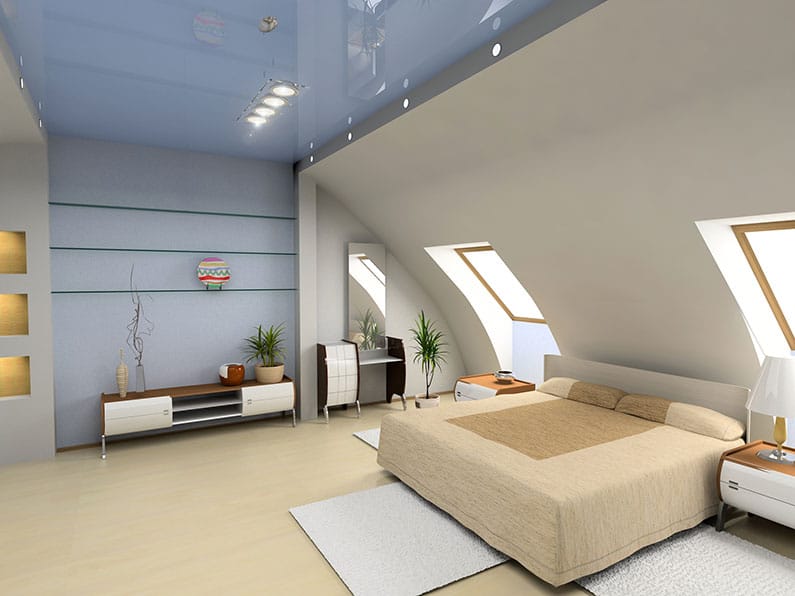
Tip #2 — Be Bold
Even metallic coatings like Modern Masters in Smoke are acceptable. This trend-setting paint has real metal particles incorporated that don’t fade or tarnish over time — it’s a fantastic option to add a classy touch to a neutral room.
If you’re not sure where to start on how to choose an accent wall color,
take a look at my How To Pick an Accent Wall guide for the ‘rules.’ Otherwise, simply pick the shades you enjoy, grab some sample swatches and try it out.
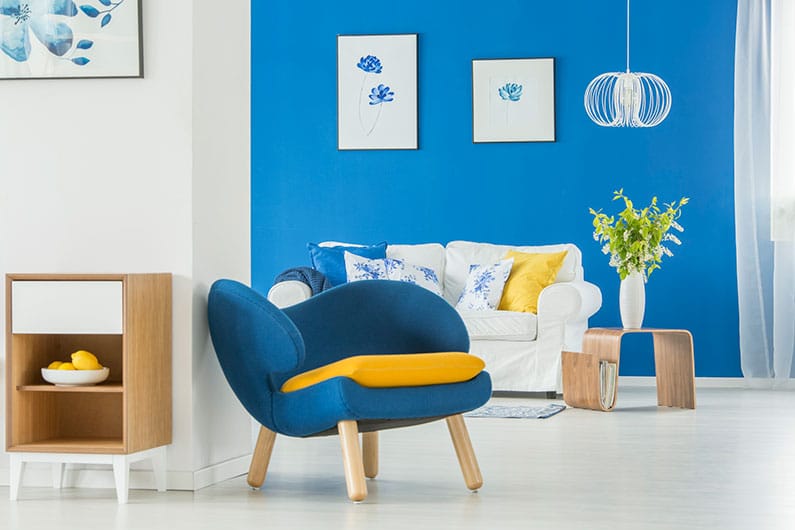
Tip #3 — Have a Blast
If you decide to invest in a device like the Earlex 5500, it will handle both interior and exterior tasks. And, thanks to its multi-purpose use — you can justify the purchase to your wife.
However, should you have concerns about cutting in and achieving sharp lines, there is a clever tool called a paint spraying shield — the Hyde Stiff Proshield 28020 being one example. Its design protects the adjacent wall or ceiling that you don’t wish to coat. For more detail on how to employ one of these devices, check out my How To Use a Paint Shield guide.
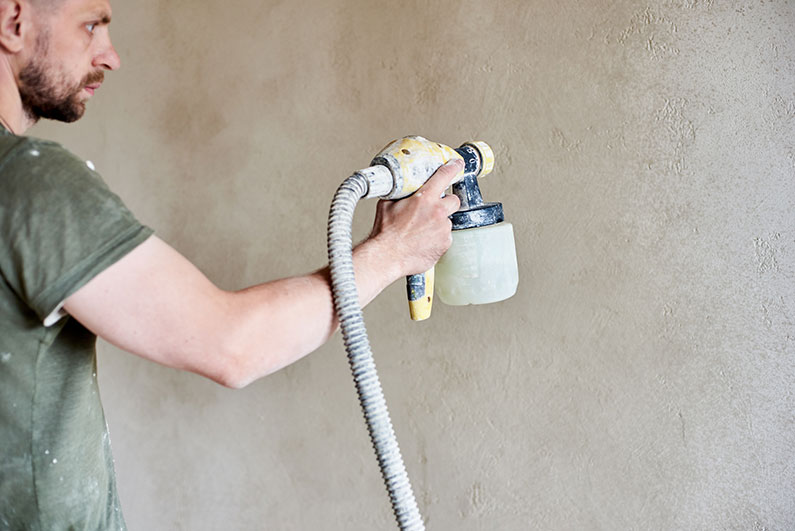
Tip #4 — Two Halves Make a Whole
Or, you could make a feature out of one corner of the room and turn it into a cozy reading space — where the accent portion is partially covered by bookshelves, a trendy light, and a comfortable chair.
Although not technically accent or feature walls, these rectangles of color will still add character to your room. And, create a great talking point when you have friends over.
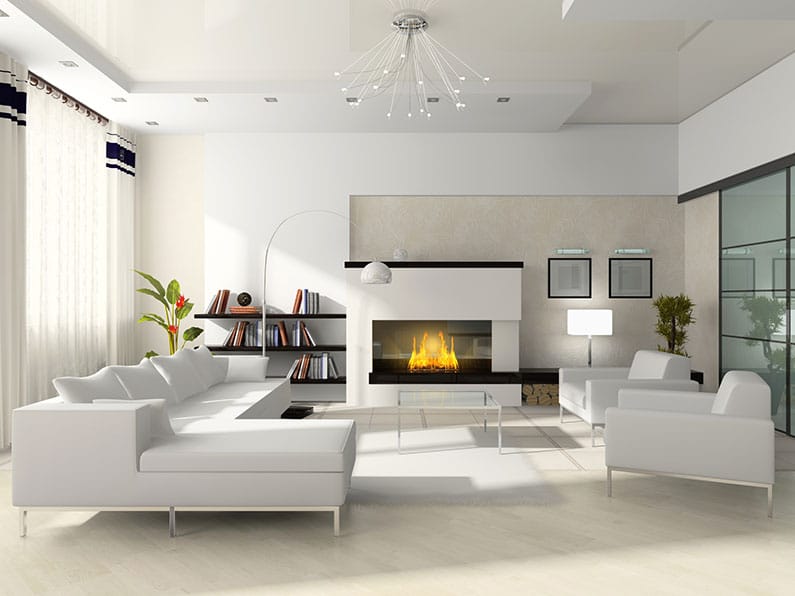
Tip #5 — Be Artistic
Feeling braver still and want to practice your artistry skills? Sketch out a mural with a pencil and then add a touch of color with a Multi-Purpose Compressor and Airbrush Kit.
However, if you feel that this is out of your league — you can’t go wrong with stenciling.
Stencils work well when combined with a paint sprayer — as the finely atomized coating doesn’t pool at the edges. Plus, with Art Deco-inspired templates available, they also add style. If this appeals, check out my How To Stencil With a Sprayer step-by-step guide.
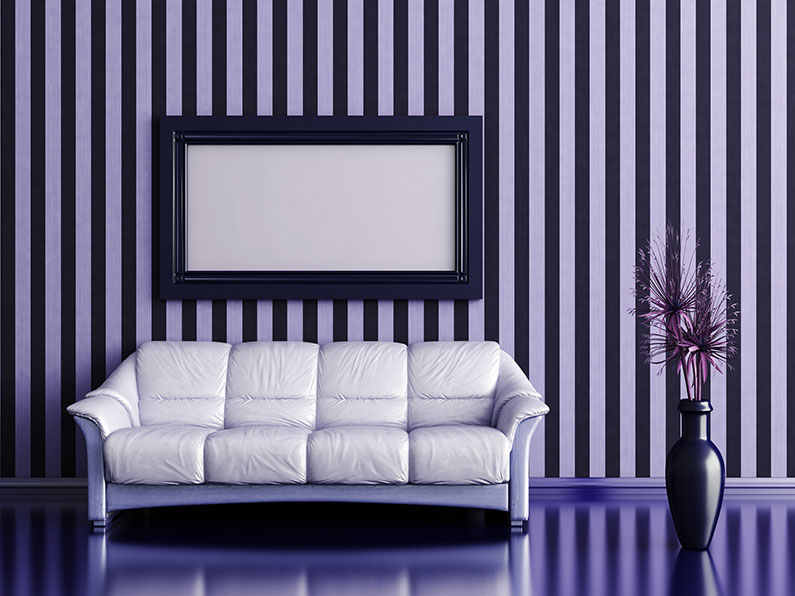
How to Paint an Accent Wall Using a Paint Sprayer
To keep it simple, I’ll stick to one plain rectangle of color. However, should you wish to jazz it up a little, adaptations can easily be made.
What You Need to Follow This Tutorial
Gather everything you need before you start to minimize unnecessary interruptions.
-
- Paint sprayer.
- Appropriate fluid nozzle.
- Chosen coating.
- Paint shield.
- Drop sheet.
- Masking tape.
- Plastic sheeting.
- Personal protective gear.
- Stir sticks.
- Ladder.
Painting an Accent Wall — Step by Step Instructions
Before you start on the main feature — ensure the entire room has had a fresh coat of paint. If you only paint one wall and the others require updating, the accent wall will accentuate the need for the rest of the room to be painted.
Step 1 – Prepare the Room
3. Tape up the plastic sheeting on adjacent walls, over windows, and tape off any surface that you don’t want to paint — light switches, trim and baseboards, etc.
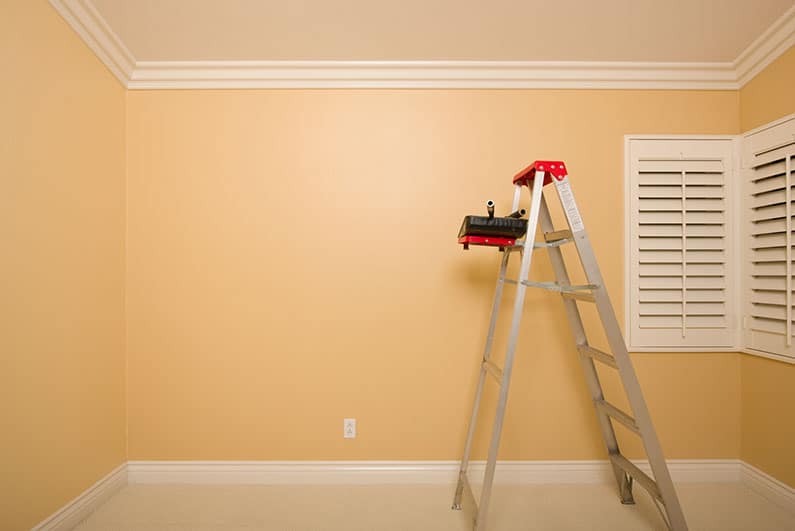
Step 2 – Start Painting
1. If using a paint spraying shield, check out the best way to use it in this tutorial.
2. Keep the sprayer nozzle approximately 10 inches away from the surface of the wall and gently pull the trigger of the paint gun.
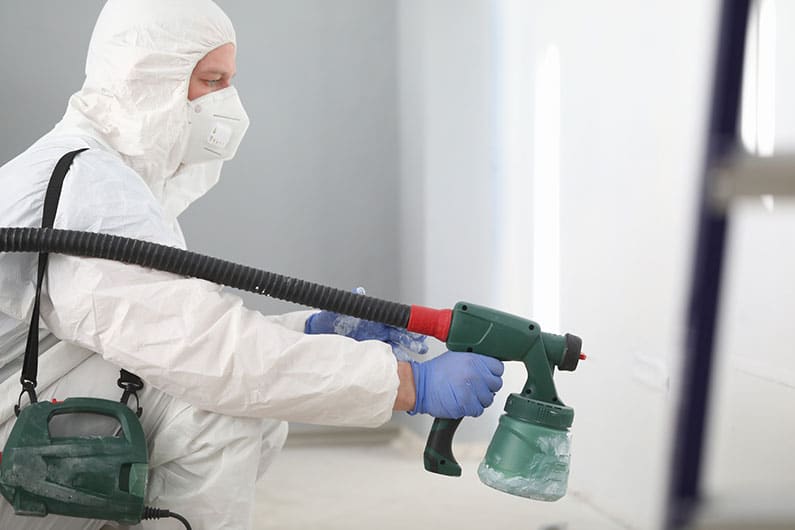
Step 3 – Clean Up
1. While the final coat is drying, use this time to clean up your paint sprayer. Air dry before storing away, ready for next time.
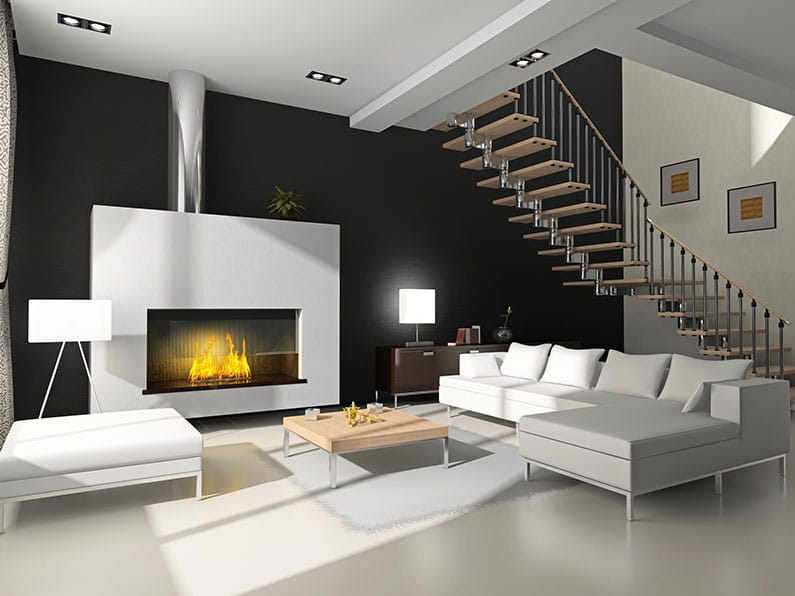
Conclusion
Go bright, be bold, and don’t be scared to paint outside the box — not literally though. There really is no wrong way to add a feature wall. Whether you prefer shiny metallics, a matte rouge, or even a tone just one or two steps up from the rest of the room — using a paint sprayer will still achieve pro-looking results.
If you’ve found these five fun tips for painting an accent wall in your home a super starting point, don’t keep it a secret — share it with your friends.
Painting an Accent Wall FAQs
Q: Which Wall Do You Paint As an Accent Wall?
Any wall you like, or even the ceiling. While there are recommended rules, once you understand them, you can break them.
Q: When Painting an Accent Wall, What Is the Rule of Thumb?
If you want to stick to the rules, typically an accent wall should be two shades darker than other walls in the room. However, a dark room can benefit from a lighter accent wall.
Another helpful hint is to stick to the rectangle shape for the best results.
Q: Do You Paint the Accent Wall First?
Only if you plan your accent wall to be lighter than the surrounding walls. When painting a room, always start with the lightest color. As the accent wall tends to be a darker shade, that will be completed last.
Q: Are Accent Walls Out of Style?
No. While how you accent the wall may change with color and style, having an accent wall is a trend that’s standing the test of time.
Q: What Color Accent Wall Goes With Gray?
One of the best things about grey paint is that it usually has almost hidden undertones — from purple and blue through to green and yellow. The ideal contrasting color depends on the base of the grey. For example, a grey coating with blue undertones, an orange accent wall works well.










